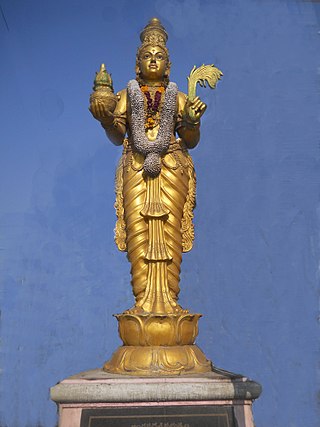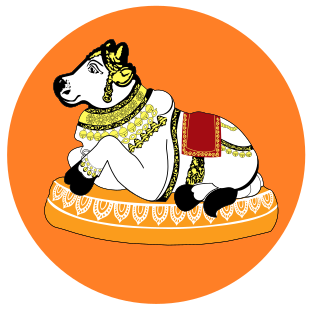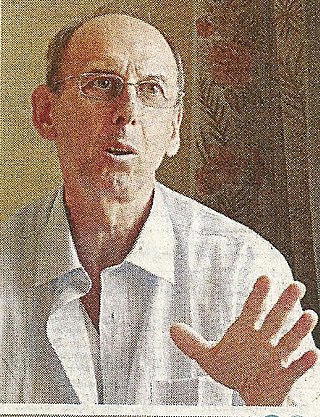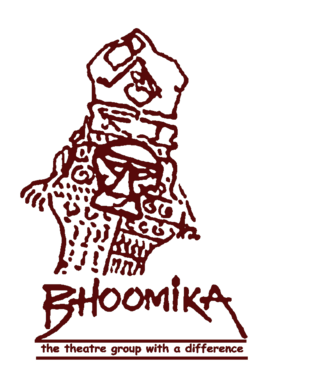
Gurram Jashuva was a Telugu poet. He is legendary figure in the Telugu literary world. With his immense wisdom and through the struggle he faced due to the caste-based discrimination, Jashuva wrote his poetry with a universal approach. He was called the "Poet of the Millennium" for his timeless pieces of poetry and literature.

The Telangana High Court is the High Court for the Indian state of Telangana. Founded by the 7th Nizam of Hyderabad Mir Osman Ali Khan, initially, it was set up as High Court of Hyderabad for the then princely state of Hyderabad Deccan and later renamed High Court of Andhra Pradesh, as it was set up on 5 November 1956 under the States Reorganisation Act, 1956. The Andhra Pradesh High Court was renamed as High Court of Judicature at Hyderabad in view of the bifurcation of Andhra Pradesh state.

Telugu people, also called Āndhras, are an ethno-linguistic group who speak the Telugu language and are native to the Indian states of Andhra Pradesh, Telangana and Yanam district of Puducherry. They are the most populous of the four major Dravidian linguistic groups. Telugu is the fourth most spoken language in India and the 14th most spoken native language in the world. A significant number of Telugus also reside in the Indian states of Karnataka, Tamil Nadu, Orissa, Maharashtra. Members of the Telugu diaspora are spread across countries like United States, Australia, Malaysia, Mauritius, UAE and others. Telugu is the fastest-growing language in the United States. It is also a protected language in South Africa.

Oggu Katha or Oggukatha is a traditional folklore singing, praising and narrating the stories of Hindu gods Mallana, Beerappa and Yellamma. It originated among the Golla (yadav) and Kuruma (Kuruba)communities, who devoted themselves to the singing of ballads in praise of Lord Shiva. These tradition-loving and ritual-performing community moves from place to place, narrating the stories of their caste gods. Oggus are the traditional priests of the Golla Kurumas and perform the marriage of Mallanna with Bhramaramba.

The Jangam or Jangamaru are a Shaiva order of religious monks. They are the priests (Gurus) of the Hindu Shaiva sect, Gurus of Veerashaiva sect and are disciples of Shiva as mentioned in Basava Puranas. The meaning of word Jangam is 'moving linga'. Jangama is one who is endowed with true spirit of Agamic knowledge, and has sacrificed his life for giving Samskara (good) character building practices in all sections of the Hindu society.
The dance forms of Andhra Pradesh take on a wide variety of colors, costumes, and types; and involve different settings and musical instruments.

Harikatha, also known as Harikatha Kaalakshepam in Telugu and Tamil, is a form of Hindu traditional discourse in which the storyteller explores a traditional theme, usually the life of a saint or a story from an Indian epic. The person telling the story through songs, music and narration is called a Haridasa.

Telugu theatre is Indian theatre in the Telugu language, based in the states of Andhra Pradesh and Telangana. Gurajada Apparao wrote the play, Kanyasulkam in 1892, which is often considered the greatest play in the Telugu language. C. Pullaiah is cited as the father of Telugu theatre movement.
Katha is an Indian style of religious storytelling, performances of which are a ritual event in Hinduism. It often involves priest-narrators who recite stories from Hindu religious texts, such as the Puranas, the Ramayana or Bhagavata Purana, followed by a commentary (Pravachan). Kathas sometimes take place in households, involving smaller stories related to the Vrat Katha genre. The didactic Satyanarayan and Ramayana kathas instill moral values by revealing the consequences of human action (karma).

The culture of Andhra Pradesh embodies some very exclusive and special entities.

The Andhra Pradesh Legislative Assembly is the lower house of the bicameral legislature of the Indian state, Andhra Pradesh.

Viswanatha Satyanarayana was a 20th-century Telugu writer. His works included poetry, novels, dramatic play, short stories and speeches, covering a wide range of subjects such as analysis of history, philosophy, religion, sociology, political science, linguistics, psychology and consciousness studies, epistemology, aesthetics and spiritualism. He was a student of the illustrious Telugu writer Chellapilla Venkata Sastry, of the Tirupati Venkata Kavulu duo. Viswanatha's wrote in both a modern and classical style, in complex modes. His popular works include Ramayana Kalpavrukshamu, Kinnersani Patalu and the novel Veyipadagalu. Among many awards, he was awarded the Jnanpith Award in 1970, the first for a Telugu writer, and Padma Bhushan in 1971.
Komuravelli Mallikarjuna Swamy Temple popularly known as Komrelly Mallanna Temple is a Hindu temple located on a hill in Komuravelli village of Siddipet district in Telangana state, India. It is located near Siddipet on SH–1 Rajiv Rahadari. The primary deity is Mallanna or Mallikarjuna Swamy, a form of Shiva. The deity is also called as Khandoba by the Maharashtrian people. The temple is located about 85 kilometers from Hyderabad. In the year 2024, an infrastructure push by the state government laid the Foundation stone for the Komuravelli railway station to ensure easy access to the temple. The station is part of the Kothapalli–Manoharabad line.
It is not easy to trace out the origins of the Telugu folk literature, for that matter any folk literature. It is as difficult as tracing the origin of a language. In other words, one can argue that the origin and existence of any folk literature can be a parallel phenomenon along with that language, because the folk expressive traditions of any ethnic group are much earlier than the language of that particular ethnic group. Need not say about the developed literature in written tradition. The cave paintings and line drawings found in different archeological sites prove the ability of the creative expressions of prehistoric human beings even before they were not able to speak. The addition of verbal creativity in latter periods has widened the folk expressive tradition in another medium that is verbal folk arts or the folk literature. Therefore, the existence of any folk literature can go back to the time of the given language correspondingly.

Sardar Paparayudu is a 1980 Indian Telugu-language historical fiction film written and directed by Dasari Narayana Rao. Produced by Kranthi Kumar, it stars N. T. Rama Rao in the title role, alongside Sridevi and Sarada, with music composed by Chakravarthy. The film was a commercial success and was remade in Hindi as Sarfarosh (1985).
Beerayya orBheerappa is a god of Kuruma community in India. This community celebrates Beerayya Patnalu, which is celebration of God Beerayya Marriage for every five, seven, or nine years. Beernollu are the traditional priests of kuruma or Kuruba Community and perform the marriage of Beerayya with Kamaraathi.
The Andhra Pradesh State Department of Archaeology and Museums is a department of the Government of Andhra Pradesh which oversees archaeological exploration and maintenance of heritage sites and museums in the Indian state of Andhra Pradesh. It was established in the year 1914 under the stewardship of Dr. Ghulam Yazdani. As a result of formation of A. P. State in 1956, the Department of Archaeology and Museums, Hyderabad was expanded and it became known as Andhra Pradesh Department of Archaeology and Museums in the year 1960. When the state of Telangana was formed in 2014, the department was separated into two; leading to disputes between the two newly formed departments over historical artifacts.

Daniel Negers is a French professor who has done extensive study of Telugu language and culture. He has translated knowledge of Telugu into French. He taught Telugu language to students of France.

Burra Venkatesham IAS is an officer of the Indian Administrative Service (IAS) and the author of Selfie of Success (2019). He is from Jangam, Telangana, India.

Bhoomika is an Indian Theatre group based in Hyderabad. It was founded in 1989 by Udaya Bhanu Garikipati. The group began its first production in 1989 with Kaki Bangaram, an adaption of Vijay Tendulkar's Pahije Jathiche. It later produced various original plays as well as adaptations in Telugu, Hindi and Deccani.















